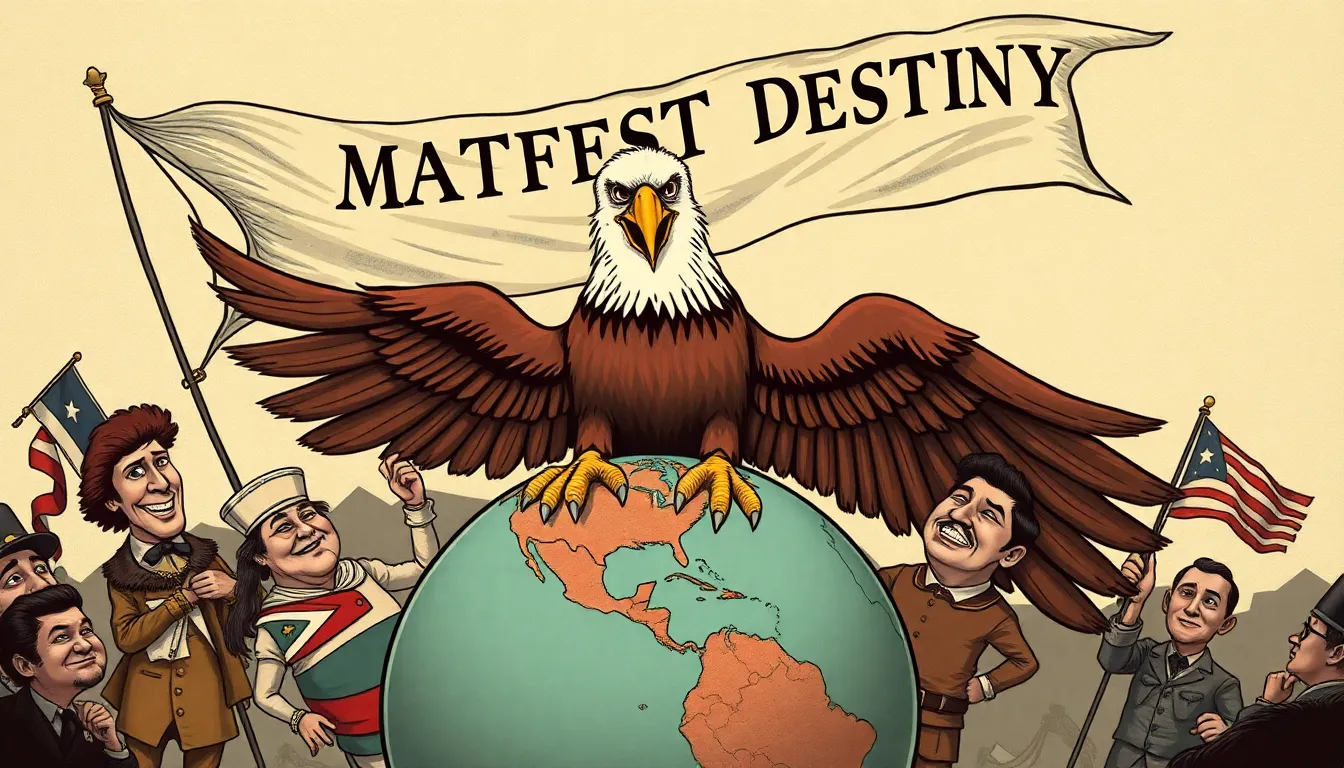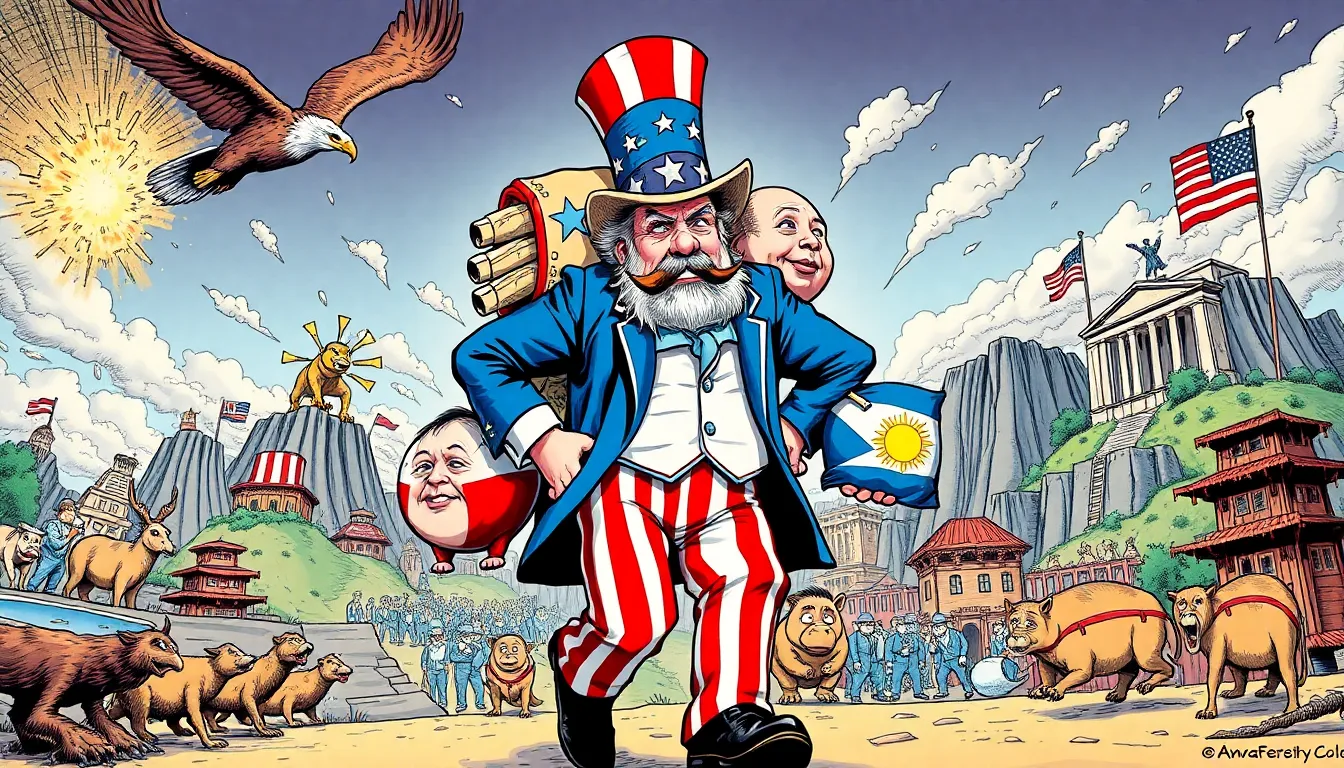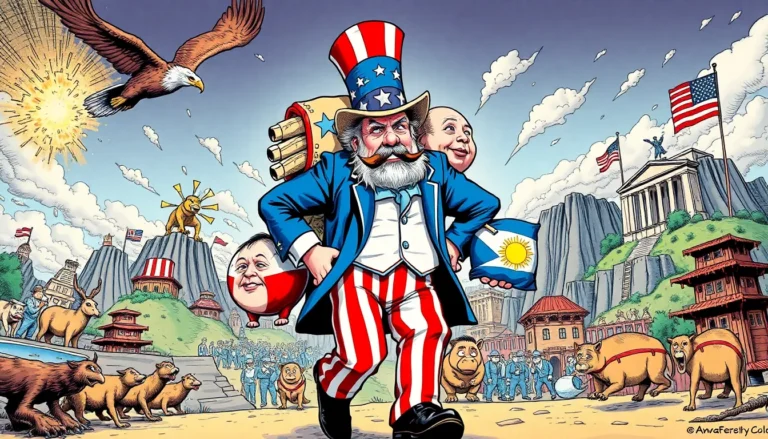When one thinks of American imperialism, images of grand military conquests and bold diplomatic maneuvers come to mind. But, lurking beneath the surface are the political cartoons that cleverly captured the zeitgeist of an era defined by expansion and controversy. These pieces served as both entertainment and a potent commentary on society’s evolving mindset. Buckle up as we investigate into the chaotic, and often hilariously exaggerated, world of political cartoons and their take on American imperialism.
Table of Contents
ToggleHistorical Context of American Imperialism

The late 19th and early 20th centuries represent a significant period for the United States, characterized by its emergence as a global power. Spurred on by a mix of economic ambition, a desire for military strength, and a belief in cultural supremacy, the nation embarked on a journey to expand its territory beyond its continental borders. This era, often referred to as the age of American imperialism, saw major acquisitions such as Puerto Rico, Guam, and the Philippines following the Spanish-American War. Also, various factors played into this expansionist ideology, including the belief in Manifest Destiny, which argued it was the nation’s divine right to spread its influence. Amidst these grand themes of power and politics, political cartoons emerged as a compelling medium to critique, satirize, and dissect the actions and motives behind imperial policies, often highlighting the absurdity and hypocrisy of the United States’ expansionist pursuits.
Visual Elements in Political Cartoons
Political cartoons are unique visual commentaries that use a combination of art and satire to convey powerful messages. At the heart of their effectiveness lies several key visual elements that engage the viewer’s intellect and emotions.
Analyzing Iconography and Symbols
Consider the iconic imagery often found in these works. For example, Uncle Sam frequently emerges as a central figure, embodying American values and ideals while simultaneously critiquing the actions of the nation. Other symbols like the American eagle, imperial crowns, and depictions of foreign lands play crucial roles in setting the tone.
The exaggerated features of characters also contribute to the satire. Political cartoons thrive on caricature, distorting faces and bodies to emphasize particular traits or behaviors. For instance, figures like President Theodore Roosevelt are often portrayed as larger-than-life, both in stature and demeanor, representing the robust energy of American imperialism, while also exposing the folly of hubris in foreign affairs.
Famous Political Cartoons of the Era
Several political cartoons from this period stand out in their influence and clarity of message. Notably, a cartoon titled “The Peacekeeper” by cartoonist Thomas Nast depicted the nation as a bear wrestling with an array of smaller animals representing different nations. This cartoon not only highlighted America’s burgeoning power but also critiqued its aggressive foreign policy by illustrating the chaos caused by interventionist policies.
Another famous cartoon, “The New American Imperialism” by J.S. Pughe, showcases a colossal Uncle Sam attempting to carry various territories and dependencies on his back, emphasizing the burdens of imperialism. These representations effectively encapsulated the many complexities surrounding American expansion.
Impact of Political Cartoons on Public Opinion
The world of political cartoons significantly influenced public sentiment during the age of American imperialism. These artworks were more than just illustrations: they acted as a mirror reflecting societal attitudes and opinions. With their punchy humor and sharp wit, they fostered discussion and debate about the morality and efficacy of imperial policies.
Case Studies: Key Political Cartoons
Examining specific case studies provides greater insight into their impact. For example, a political cartoon that humorously depicted a colonial American child being told to share his toys with newly acquired territories sparked outrage among critics of imperialism. It illustrated the widespread sentiment that America was overstepping, painting a vivid picture of how the populace viewed actions taken in the name of national interest. The use of humor in these cartoons made complex political issues more accessible to the general public, prompting them to question and engage in the political discourse surrounding America’s role in global affairs.





